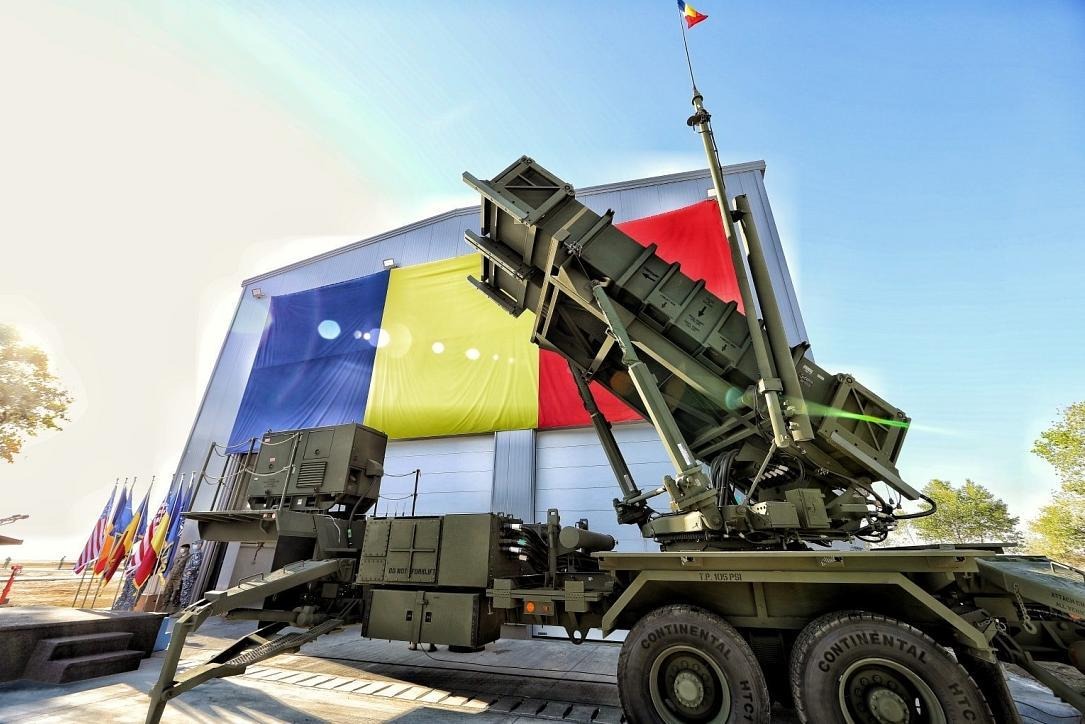
Romania on Course to Revamp Its Air Defenses
Romania on Course to Revamp Its Air Defenses
Faced with Russia’s military buildup in the Black Sea, Romania is set to acquire US-made Patriot anti-aircraft and missile-defense systems as well as 36 F-16 fighters in order to bolster its air-defense capabilities (Hotnews.ro, July 26). Former defense minister Adrian Țuțuianu has stated that Romania intends to acquire the new missile system starting in 2018, when the first Patriot battery should arrive; the first payment should be made in November 2017 (Mediafax, July 26). The program is estimated at $3.9 billion (Dsca.mil, July 11), and the Romanian parliament is set to approve the cabinet’s acquisition plans in October, during its fall session.
Both Romania’s land-based air defenses and fighter force are obsolete. With the exception of the HAWK missile system, which was acquired in 2004, Romania’s air-defense systems are of Soviet origin. Soldiers operating these systems complain about the difficulties encountered in maintaining the obsolete technology and the limited amount of live-fire drills (Observatorul Militar, August 22), which hamper operational readiness. Bucharest is keenly aware of this situation. It has begun investing in long-range mobile radars (Agerpres, February 2, 2016) as well as air-defense systems (Digi24HD, August 23, 2017), and it has started re-capitalizing its fighter force.
Russia’s annexation of Crimea has highlighted the obsolescence of Romania’s air defenses. As the Kremlin built up its forces on the peninsula, Russian aircraft began aggressively patrolling in the Black Sea. Romanian aircraft have been forced to intercept these Russian planes when they approach the country’s air space. However, in deterrence terms, it is not particularly credible to intercept Su-27/30 fighters or Tu-22M3 Backfire bombers with aging MiG-21s (Aviation Week, September, 25 2015). Consequently, Bucharest has asked the North Atlantic Treaty Organization (NATO) to step in and assist. And since 2016, US, Canadian, Portuguese and British aircraft have been bolstering Romania’s air defenses, on a rotational bases (Gov.uk, March 27).
The programs to modernize Romanian air defenses gained new traction given the current regional circumstances. However, these programs are fraught with technical and financial challenges. The F-16 acquisition, the flagship of the modernization process of the Romanian Air Force, risks stalling as the international demand for Fighting Falcons has outstripped supply, even when it comes to used aircraft (Defense One, June 19). As Lockheed Martin ramps up production of the F-35 Lightning II, F-16 production has been relocated and slowed down due to a lack of new orders (Defense One, March 22). Originally, Romania planned to acquire 24 aircraft, but due to financial reasons it had to settle on 12 (Puterea, September 29, 2016). In hindsight, this proved to be a bad decision. It is unlikely that Romania will order newly built F-16s in the near future due to the associated costs as well as the prevailing acquisition strategy, which sees the Fighting Falcon as a bridge toward ultimately purchasing the F-35 (Economica.net, September 29, 2016).
Current plans envisioned the acquisition of a second F-16 squadron between 2017 and 2019, concurrently with the phasing out of the MiG-21 (Hotnews.ro, December, 21, 2016). However, this may not be the case, as the market for used F-16 has tightened. Right now Romania is competing for used F-16s with Bulgaria and Croatia, countries which are also looking to replace their obsolete Soviet aircraft.
Used aircraft are the Achilles heel of Romania’s F-16 program. Although, in financial terms, used or “second-hand” aircraft are a good choice for countries with small air forces and tight budgets, in the long term it also means expensive maintenance as well as rapid obsolescence. Moreover, used aircraft raise delicate political issues as decision-makers have to explain to the Romanian public how “second-hand” military equipment can increase the country’s defense capabilities. In the end, Romania may be forced to order new F-16s due to the limited availability of used aircraft and the need to replace the MiG-21.
Meanwhile, the decision to acquire Patriot missiles was likely influenced by a number of factors. One of these are the difficulties encountered by Romania with its F-16 acquisition. Long-range air-defense systems may compensate for the lack of modern fighter aircraft and complement the existing force. Interoperability with the United States and other NATO allies that already operate Patriot systems (Germany, Holland) or plan to acquire such systems in the near future (Poland) played a significant role in Romania’s option for Patriot missiles.
Furthermore, during exercises with US forces, Patriot air- and missile-defense systems interacted and proved interoperable with Romanian HAWK systems (Agerpres, July 17). The deployment of missile-defense assets in Romania at Deveselu as part of the European Phased Adaptive Approach (EPAA) were another argument in favor of Patriots as they can complement Standard SM-3 missiles. Finally, the Patriot system is significantly cheaper than other alternatives, such as MBDA’s SAMP/T system or MEADS.
Romania’s plans to increase air-defense capabilities are ambitious and geared toward countering the Russian threat, but they suffer from structural challenges, both technical and financial. Technical challenges can be surmounted with careful planning and smart decision-making. Financial challenges are another matter and now, as in the past, prove to be the main challenge to Romania’s military drive. Despite having record economic growth, Romania experiences budgetary deficits and economic imbalances (Curs de Guvernare, September 4), which in the near future can delay military acquisitions. Political will may not be enough to carry out the process of securing Romania’s air space, and important military programs may suffer delays due to financial issues.


